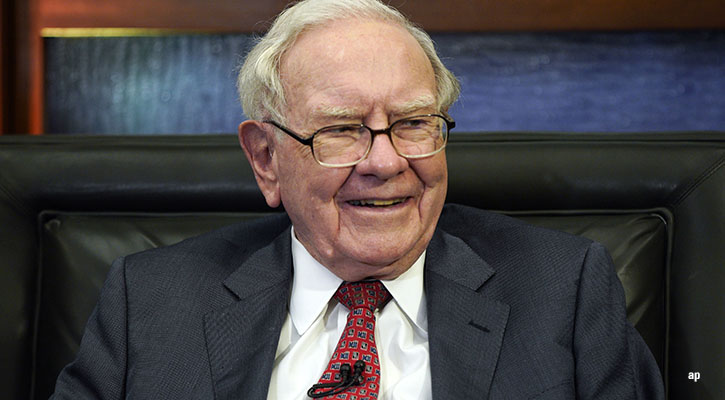
Faced with social distancing, shelter-in-place, work-from-home and other pandemic-led restrictions, homebound consumers have shifted their attention to domestic DIY projects. The trend has pushed the demand for home improvement products and services higher.
Year-to-date, the Dow Jones US Home Improvement Retailers Index has soared nearly 30% (in U.S. dollar terms), compared with a 4% gain for the S&P 500 index, and the Dow Jones Industrial Average’s loss of 4%, as of August 20.
Leading home improvement retailers have reported robust sales growth in recent months. They are well positioned to benefit from the staying power of the DIY trend, a switch in consumer spending pattern during the pandemic, and a reacceleration in homebuilding activity. However, given the elevated valuations of these stocks, investors may want to patiently wait until a meaningful pullback creates an attractive entry point.
|
The Home Depot Inc |
|
|
Ticker |
|
|
Current yield: |
2.12% |
|
Forward P/E: |
27.62 |
|
Price |
US$281.14 |
|
Fair value: |
US$200 |
|
Value |
42% premium |
|
Moat |
Wide |
|
Moat Trend |
Stable |
|
Star rating |
* |
|
Data as of Aug. 20, 2020 |
|
The world's largest home improvement specialty retailer, Home Depot (HD) operates nearly 2,300 warehouse-style stores offering a wide range of products in-store and online across the U.S., Canada, and Mexico. The firm’s product portfolio includes numerous building materials, home improvement products, lawn and garden products, and decor products as well as various services, including installation and tool and equipment rentals.
The retailer is expected to ring up a whopping more than US$125 billion in revenue in 2020, supported by a stable housing market and an improved merchandising and distribution network. “Home Depot should continue to capture top-line growth, bolstered by an aging housing stock and rising home prices, but should also garner support from the work-at-home movement as a result of COVID-19,” says a Morningstar equity report.
Home Depot’s wide economic moat, or sustainable competitive advantage, stems from its economies of scale and brand equity. “Home Depot's size creates a low-cost advantage that is the foundation of our wide economic moat rating,” says Morningstar equity analyst, Jaime Katz, who recently raised the stock’s fair value from US$184 to US$200, prompted by a stronger 2020 forecast.
|
Lowe's Companies Inc |
||
|
Ticker |
||
|
Current yield: |
1.39% |
|
|
Forward P/E: |
23.58 |
|
|
Price |
US$158.56 |
|
|
Fair value: |
US$133 |
|
|
Value |
19% premium |
|
|
Moat |
Wide |
|
|
Moat Trend |
Stable |
|
|
Star rating |
** |
|
|
Data as of Aug. 20, 2020 |
||
Lowe’s (LOW) is the second-largest home improvement retailer in the world, operating about 1,970 stores across the U.S. and Canada. The firm's offerings include products and services for home decorating, maintenance, repair, and remodelling, targeted at retail do-it-yourself and do-it-for-me customers as well as commercial business clients.
Lowe’s sustainable competitive advantages are rooted in merchandising excellence, operational efficiency, supply chain improvements, and customer engagement. “As the second-largest global home improvement retailer, Lowe’s scale captures a low-cost position that supports our wide economic moat rating,” says a Morningstar equity report, noting that the firm’s “improving information technology platform and distribution network [proved additional] competitive advantages and key differentiators in the retail sector.”
The retailer’s impressive second-quarter performance highlights its success attracting home-improvement consumers during the pandemic. “Accelerated demand in home improvement stemming from consumers spending more time at home (due to COVID-19) has also generated better cost leverage results faster than we had anticipated,” says Katz, who recently upped the stock’s fair value from US$111 to US$133.
Lowe’s banner second-quarter performance across the fleet featured all divisions comping above 20% and all regions comping higher than 30%. Katz cautions, though, not to expect Lowe’s to sustainably deliver double-digit comps, forecasting 2%-3% long-term growth.
|
Sherwin-Williams Co |
|
|
Ticker |
|
|
Current yield: |
.80% |
|
Forward P/E: |
31.06 |
|
Price |
US$666.27 |
|
Fair value: |
US$360 |
|
Value |
85% premium |
|
Moat |
Narrow |
|
Moat Trend |
Stable |
|
Star rating |
* |
|
Data as of Aug. 20, 2020 |
|
The largest provider of architectural paint in the U.S., Sherwin-Williams (SHW) has approximately 4,700 stores and sells premium paint at higher price points than most competitors. The firm also sells paint-related products in big-box stores and provides coatings for original equipment manufacturers.
North America accounts for more than three fourths of Sherwin's business. “The company's most valuable assets are its extensive North American network of stand-alone stores and its sterling reputation among professional painters,” says a Morningstar equity report. The acquisition of Valspar bolstered Sherwin’s international exposure and its retail and industrial coating presence, “which should improve production efficiency,” the report adds.
Sherwin's largest segment, the Americas group, has grown rapidly even in developed markets by consistently stealing share from smaller rivals as it ramps up store count throughout the Americas. “Given the tilt toward architectural coatings, we expect the segment to benefit in the medium term from a gradual increase in new- and existing-home transactions,” says Morningstar equity analyst, Charles Gross. “Elevated do-it-yourself painting activity and the sharp decline in energy prices were two substantial tailwinds,” says Gross who recently raised the stock’s fair value from US$350 to US$360, prompted by better-than-expected Americas group segment sales and profit generation.






















